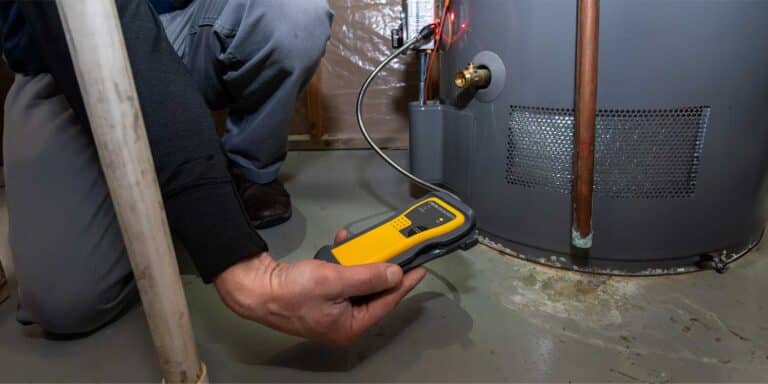Ideal Temperature and Humidity for Your Houston Home
Our homes are our sanctuaries, places where we can relax and unwind after a long day. But for them to truly feel comfortable, there needs to be a balance between two unseen factors: temperature and humidity. Just like Goldilocks and the porridge, both need to be “just right” for us to feel our best.
In order for you to be able to keep your home at your preferred temperature, your air conditioner needs to be in great working condition. If you are experiencing AC problems, contact Vanderford Air & Plumbing for air conditioning repair. We offer same-day service, guaranteed!
The Importance of Balance
Temperature and humidity are intrinsically linked. Warmer air can hold more moisture, so a higher temperature often coincides with higher humidity. This back and forth can significantly impact comfort and even your health.
- Temperature: When it’s too hot, we sweat excessively, leading to dehydration and discomfort. Conversely, excessively cold temperatures can make us shiver and struggle to sleep. Ideally, we want a temperature that allows our bodies to regulate themselves efficiently.
- Humidity: Low humidity can dry out our skin, sinuses, and even irritate our airways. High humidity, on the other hand, can feel muggy and make it harder to cool down. It can also create an environment conducive to mold growth.
Finding Your Comfort Zone: Temperature
So, what temperature is ideal? The answer, like most things in life, is “it depends.” Here are some factors to consider:
- Season: Most people prefer cooler temperatures in the summer (around
68-72°F) and slightly warmer temperatures in the winter (around 70-74°F) [1].
- Activity level: If you’re relaxing on the couch, you might prefer a slightly warmer setting than if you’re actively cooking or cleaning.
- Age: Infants and older adults may be more sensitive to temperature extremes and may require slightly warmer or cooler settings for optimal comfort.
- Personal preference: Ultimately, comfort is subjective. Experiment and find the temperature that feels best for you.
Finding the Right Balance: Humidity
Humidity is another crucial factor. Here’s what you need to know:
- Ideal range: The Environmental Protection Agency (EPA) recommends keeping indoor humidity levels between 30% and 50%. This range helps to prevent the spread of allergens and mold growth, reduce respiratory problems, improve sleep quality, and maintain comfortable skin conditions.
- Seasonal variations: Humidity levels naturally fluctuate with the seasons. In drier winter months, you might need a humidifier to add moisture to the air. However, during the summer, a dehumidifier can help remove excess moisture and make the air feel cooler.
Signs Your Home is Out of Balance
How can you tell if your home’s temperature and humidity are out of whack? Here are some signs to watch out for:
- Temperature: Feeling excessively hot, cold, or sweaty can indicate temperature imbalances. Dry, itchy skin or frequent colds could also be signs.
- Humidity: Dry, cracked skin, irritated sinuses, or dust mites could be signs of low humidity. Conversely, musty odors, visible mold growth, or condensation on windows can indicate high humidity.
Creating Your Perfect Climate
There are several ways to achieve a comfortable temperature and humidity balance in your home:
- Thermostat: Use a programmable thermostat to adjust the temperature automatically throughout the day and night.
- Ceiling fans: Ceiling fans can help circulate air and create a windchill effect, making you feel cooler without lowering the temperature significantly.
- Humidifier: During dry winter months, a humidifier can add moisture to the air, improving comfort and potentially reducing respiratory problems.
- Dehumidifier: Conversely, a dehumidifier can remove excess moisture from the air during the summer, making you feel cooler and preventing mold growth.
- Air conditioning: An air conditioner cools and dehumidifies the air, making it a good option for hot and humid climates. However, using an air conditioner too frequently can contribute to dry air.
- Shower habits: Taking shorter, cooler showers can help reduce excess moisture in the air, particularly in the winter.
- Houseplants: Houseplants can add a touch of beauty to your home and also help regulate humidity levels by releasing moisture into the air.
Air Conditioning Repair for Perfect Home Temperature
By understanding the ideal temperature and humidity ranges and how they impact you, you can create a comfortable and healthy living environment in your home. Invest in a hygrometer to monitor humidity levels, and don’t be afraid to experiment to find the perfect settings for you and your family. With a little effort, you can turn your house into a true haven of comfort.
If your air conditioning unit isn’t working properly, we can help with essential air conditioning repair so you can keep your home at the perfect temperature for your comfort level. Contact our team at Vanderford Air & Plumbing right away for same-day repair!




